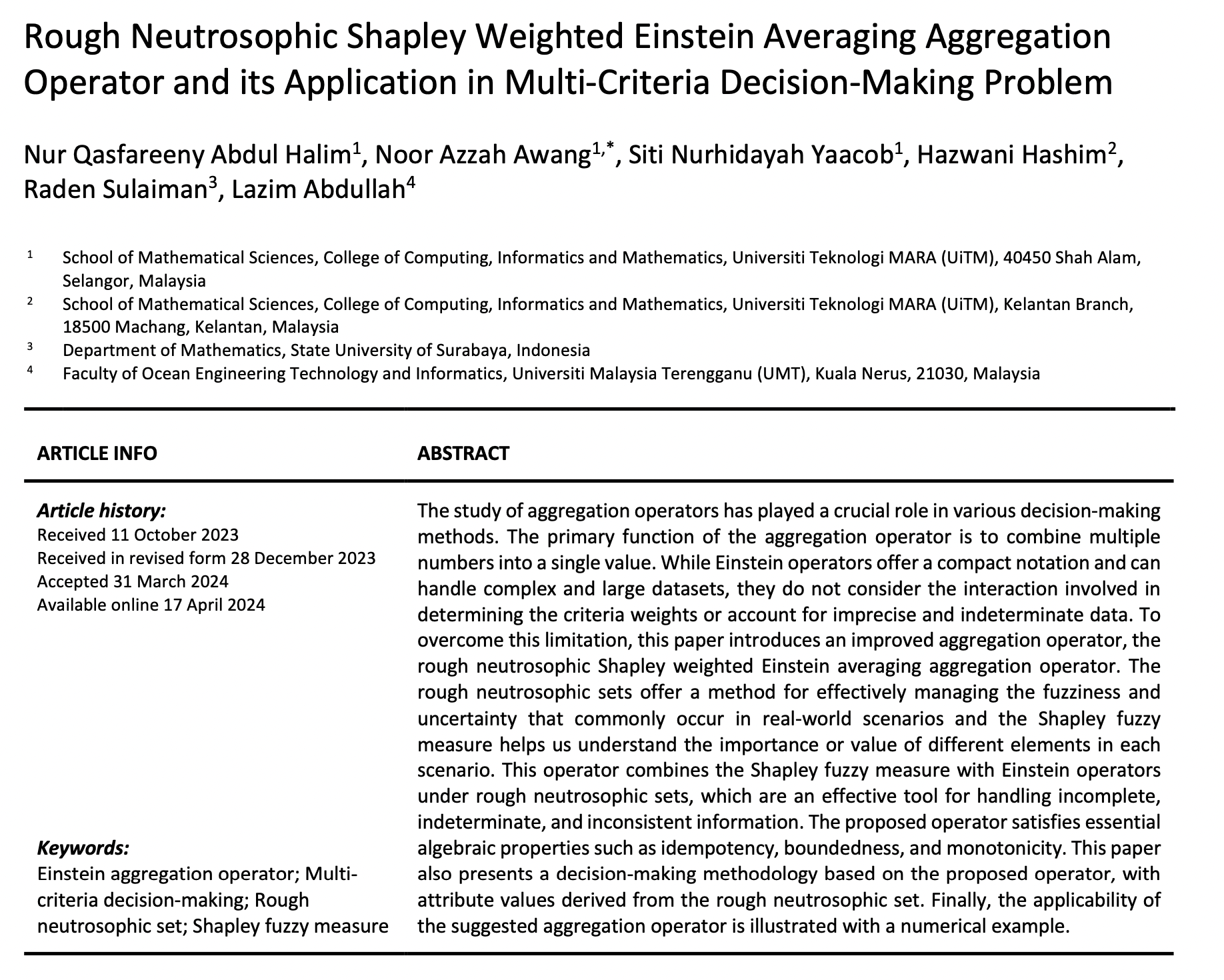Rough Neutrosophic Shapley Weighted Einstein Averaging Aggregation Operator and its Application in Multi-Criteria Decision-Making Problem
DOI:
https://doi.org/10.37934/araset.43.2.5264Keywords:
Einstein aggregation operator, Multi-criteria decision-making, Rough neutrosophic set, Shapley fuzzy measureAbstract
The study of aggregation operators has played a crucial role in various decision-making methods. The primary function of the aggregation operator is to combine multiple numbers into a single value. While Einstein operators offer a compact notation and can handle complex and large datasets, they do not consider the interaction involved in determining the criteria weights or account for imprecise and indeterminate data. To overcome this limitation, this paper introduces an improved aggregation operator, the rough neutrosophic Shapley weighted Einstein averaging aggregation operator. The rough neutrosophic sets offer a method for effectively managing the fuzziness and uncertainty that commonly occur in real-world scenarios and the Shapley fuzzy measure helps us understand the importance or value of different elements in each scenario. This operator combines the Shapley fuzzy measure with Einstein operators under rough neutrosophic sets, which are an effective tool for handling incomplete, indeterminate, and inconsistent information. The proposed operator satisfies essential algebraic properties such as idempotency, boundedness, and monotonicity. This paper also presents a decision-making methodology based on the proposed operator, with attribute values derived from the rough neutrosophic set. Finally, the applicability of the suggested aggregation operator is illustrated with a numerical example.
Downloads





























